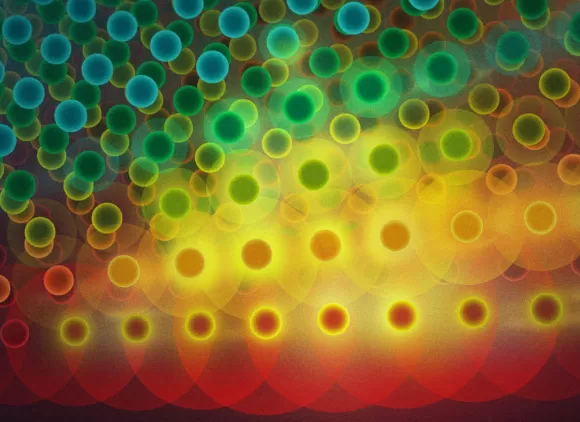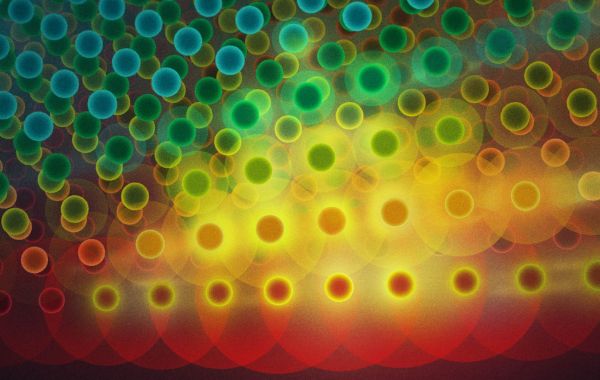About the series
Abstract: The new era of data science is here. Our lives as well as any field of business and society are continuously transformed by our ability to collect meaningful data in a systematic fashion and turn that into value. These needs not only push for new and innovative capabilities in composable data management and analytical methods that can scale in an anytime anywhere fashion, but also require methods to bridge the gap between applications and compose such capabilities within solution architectures.
Existing cyberinfrastructure provides powerful components that can be utilized as building blocks to translate the newest advances into impactful solution architectures that can transform science, society and education. However, any solution architecture today depends on the effective collaboration of a multi-disciplinary data science team, not only with humans but also with analytical systems and infrastructure which are inter-related parts of the solution. Focusing on collaboration and communication between people, and dynamic, predictable and programmable interfaces to systems and scalable infrastructure from the beginning of any activity is critical.
This talk will overview some of our recent work on building dynamic data driven cyberinfrastructure and impactful application solution architectures that showcase integration of a variety of existing technologies and collaborative expertise. In particular, the lessons learned from the development of the NSF WIFIRE cyberinfrastructure will be summarized. The WIFIRE project builds an end-to-end cyberinfrastructure for real-time and data-driven simulation, prediction, and visualization of wildfire behavior. WIFIRE’s real-time data products and modeling services are routinely accessed by fire research and emergency response communities for modeling as well as the public for situational awareness. Existing sustainability efforts and public/private partnerships as a result of this demand will also be discussed.
Bio: Dr. Ilkay Altintas is the Chief Data Science Officer at the San Diego Supercomputer Center (SDSC), UC San Diego, where she is also the Founder and Director for the Workflows for Data Science Center of Excellence. In her various roles and projects, she leads collaborative multi-disciplinary with a research objective to deliver impactful results through making computational data science work more reusable, programmable, scalable and reproducible.
Since joining SDSC in 2001, she has been a principal investigator and a technical leader in a wide range of cross-disciplinary projects. Her work has been applied to many scientific and societal domains including bioinformatics, geoinformatics, high-energy physics, multi-scale biomedical science, smart cities, and smart manufacturing. She is a co-initiator of the popular open-source Kepler Scientific Workflow System, and the co-author of publications related to computational data science at the intersection of workflows, provenance, distributed computing, big data, reproducibility, and software modeling in many different application areas. She is also a popular MOOC instructor in the field of “big” data science, and reached out to hundreds of thousands of learners across any populated continent.
Her Ph.D. degree is from the University of Amsterdam in the Netherlands with an emphasis on provenance of workflow-driven collaborative science. She is an associate research scientist at UC San Diego. Among the awards she has received are the 2015 IEEE TCSC Award for Excellence in Scalable Computing for Early Career Researchers and the 2017 ACM SIGHPC Emerging Woman Leader in Technical Computing Award.
How To Attend: Plan to join us for our second webinar, July 19th at 2:00pm EDT by registering at this link: https://nsf.webex.com/nsf/onstage/g.php?MTID=e8d92224e1c641e2320fc1d563a2f9f43
*additional instructions for using WebEx are in the attached PDF file.
OAC - CI Webinar Series Format: The format for the webinar will begin with opening remarks from OAC director, Dr. Manish Parashar and a speaker introduction provided by OAC Program Director Amy Walton. The Dr. Altintas's presentation will follow, concluding with a 5-10min Q&A. Questions must be sent via email and will be read by the moderator at the conclusion of the presentation. The webinars will be recorded and posted on the NSF website.
OAC - CI Webinar Series Schedule: The webinars will be on the third Thursday of each month and are open to all interested communities. A list for upcoming webinars are posted below. - August 16th – Dr. David Tarboton, Utah State University
- September 20th – Mr. Von Welch, National Science Foundation Cybersecurity Center of Excellence, Trusted CI Do you want to present at one of the upcoming webinars? We are asking the community for nominations and self-nominations for presenting at our webinars. Please email our AAAS Science and Technology Policy Fellow: Dr. Scott L. Sellars (ssellars@nsf.gov) with your nomination(s). The nomination should include the name, project title, award number, and an abstract of the presentation.
OAC - CI Webinar Series Schedule: The webinars will be on the third Thursday of each month and are open to all interested communities. A list for upcoming webinars are posted below. - August 16th – Dr. David Tarboton, Utah State University
- September 20th – Mr. Von Welch, National Science Foundation Cybersecurity Center of Excellence, Trusted CI Do you want to present at one of the upcoming webinars? We are asking the community for nominations and self-nominations for presenting at our webinars. Please email our AAAS Science and Technology Policy Fellow: Dr. Scott L. Sellars (ssellars@nsf.gov) with your nomination(s). The nomination should include the name, project title, award number, and an abstract of the presentation.




